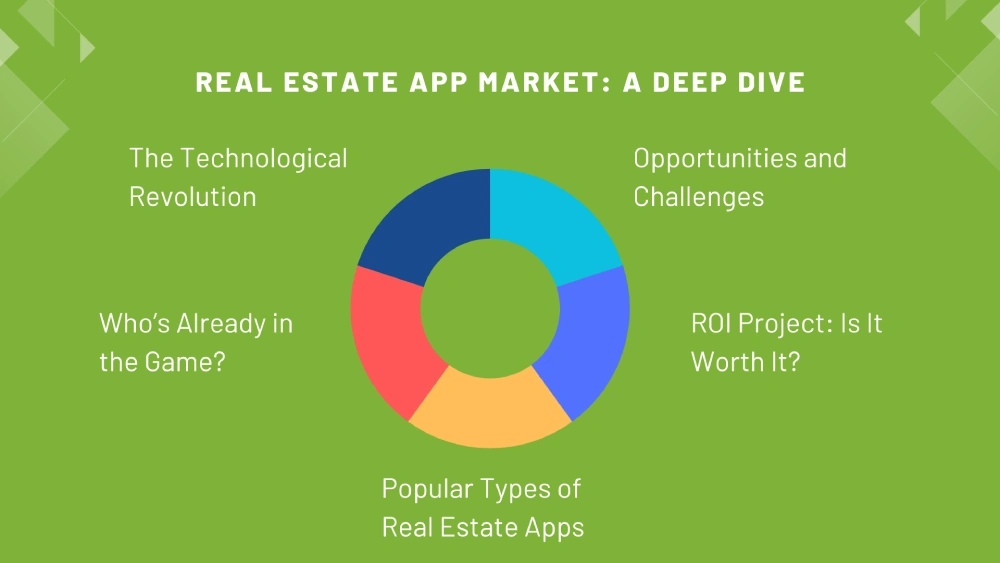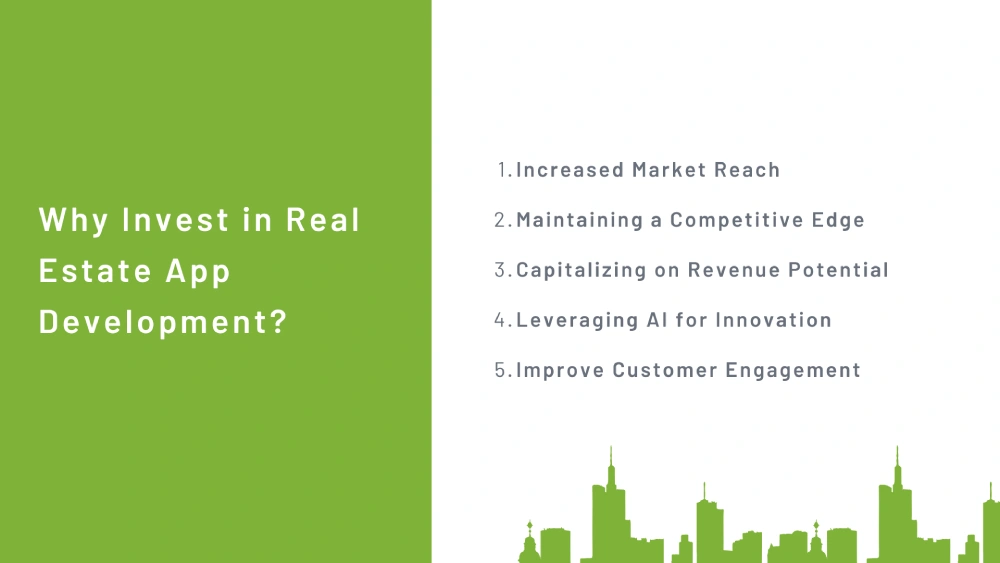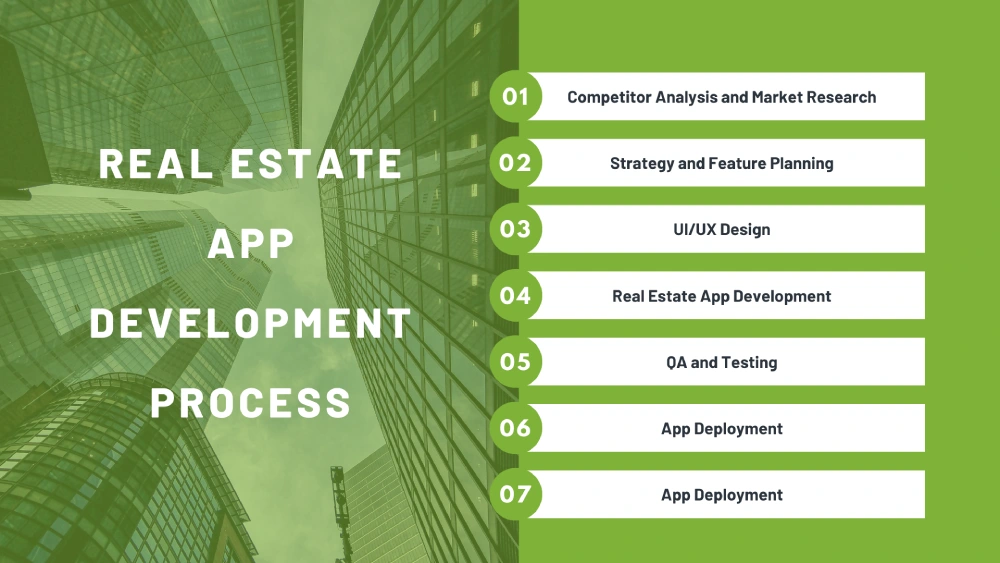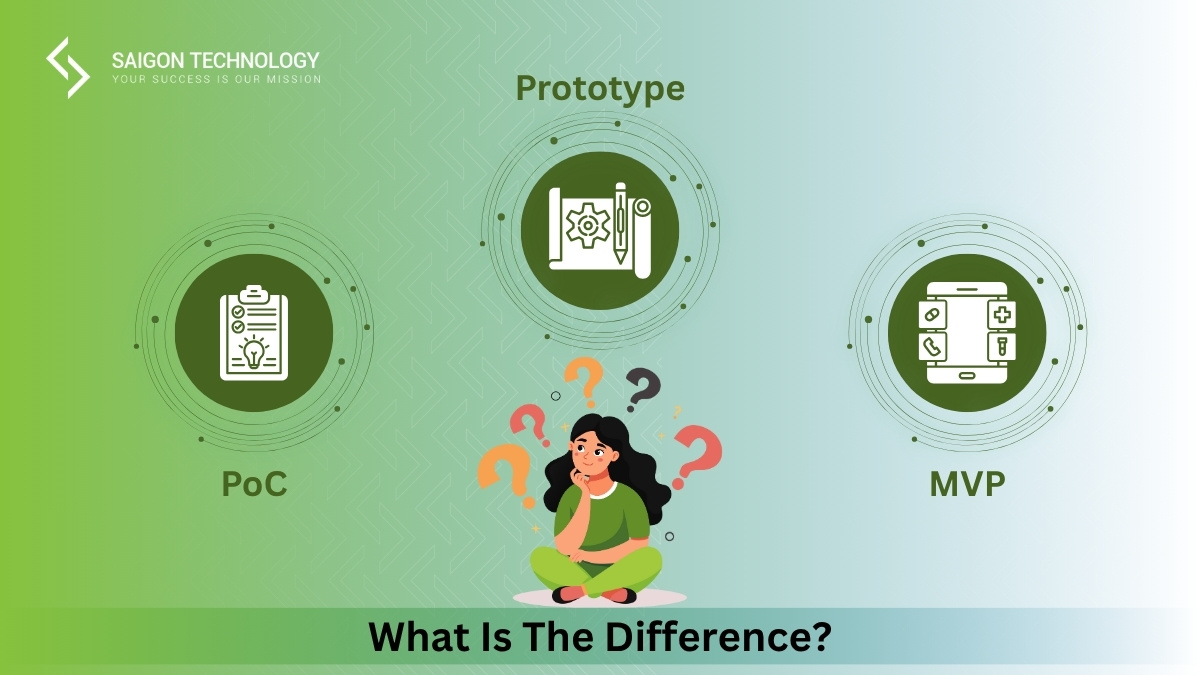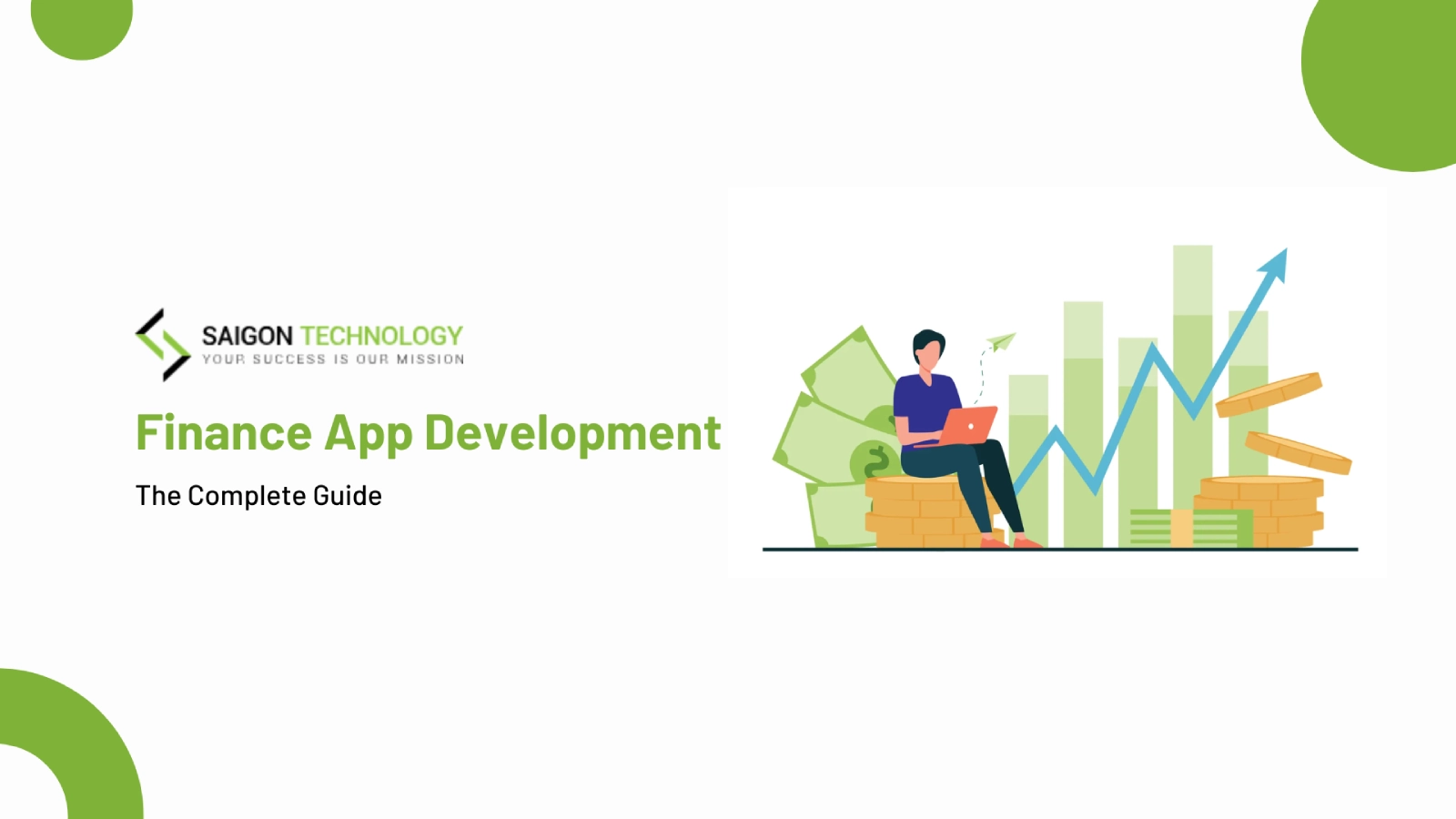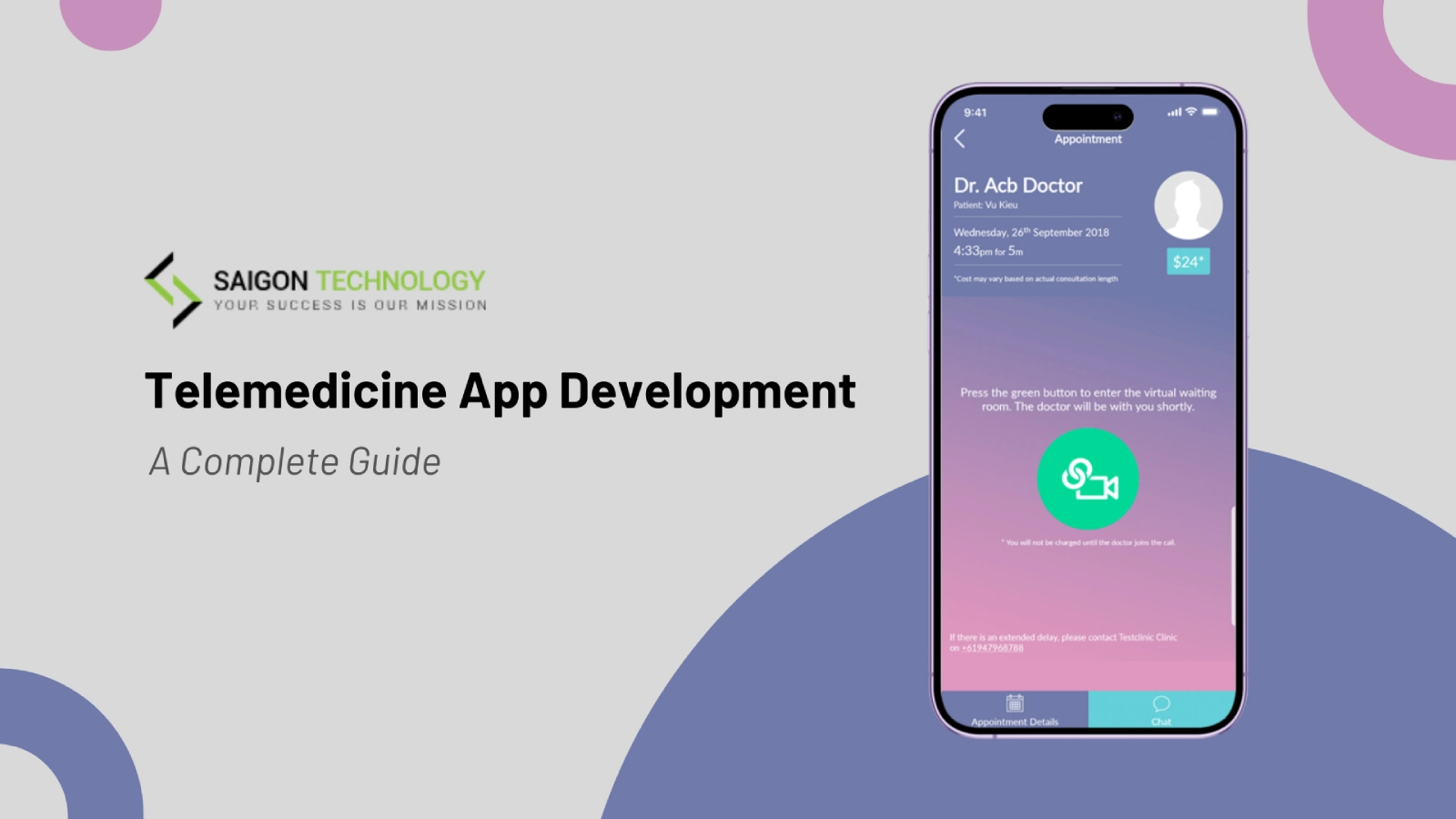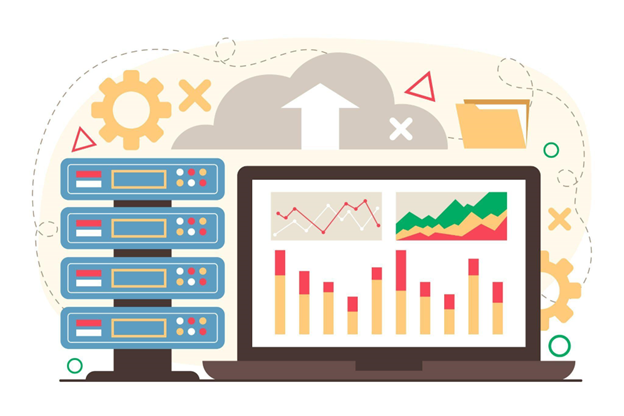Now let’s discuss real estate app development. They make it as simple as ordering pizza to select your ideal house. It’s easy to see why the app market has expanded so quickly. Real estate applications are rapidly becoming a necessary tool for buyers, sellers, and tenants due to the speedy development of technology and the desire for ease.
Here’s the deal: the global real estate app market growth hit $10.24 billion in 2022, and it’s growing at a crazy 12.8% every year until 2030. That’s not just a fancy statistic—it’s a huge opportunity for anyone with a great idea. Whether you’re a tech enthusiast, a business owner, or an accomplished real estate agent looking to make a difference, now is the time to follow the trend.
The issue is that listing houses isn’t the only thing needed to make a real estate mobile app development profitable. Making an experience is the aim. Imagine tools that help purchasers determine the worth of their dream property, AI-powered recommendations, and virtual reality tours. That seems thrilling, doesn’t it? Let’s begin by talking about how you could help this quickly growing field.
Real Estate App Market: A Deep Dive
The real estate app market is undergoing a rapid transformation, driven by cutting-edge technology. The adoption of artificial intelligence (AI) is a prime example, with a 2023 survey revealing that 14% of real estate companies already leverage its power. This number is only expected to grow, as AI enhances market search intelligence, provides predictive analytics, and personalizes user recommendations.
The Technological Revolution
Next are augmented reality (AR) and virtual reality (VR). Instead of having to deal with aggressive brokers or go around town, picture being able to visit a property from the comfort of your couch.
These technologies are no longer just cool extras; they’re becoming essential for staying competitive.
Who’s Already in the Game?
There is a lot of competition in the market. Large firms with years of experience, such as Realtor, Redfin, and Zillow, have some impressive features. Think about advanced search filters, mortgage calculators, and local information. So what makes you special?
Determining your area of expertise is essential. You may focus on luxury real estate or the rental market. Or maybe you target foreign buyers who need help navigating foreign markets. There is still plenty of room for innovation if you know where to seek.
Popular Types of Real Estate Apps
Not every real estate mobile app development is made equally. Some of the most well-liked categories are as follows:
- Property Search Apps: These are the cornerstone of the market, enabling buyers and renters to find properties using location-based searches, filters, and detailed listings.
- Mortgage and Financial Tools: By assisting users in determining their affordability, comparing loan possibilities, and calculating mortgage payments, these apps help consumers feel less stressed when purchasing a property.
- Agent and Broker Platforms: Designed for real estate professionals, these apps make life easier by streamlining client management, lead generation, and property marketing.
- VR/AR Tour Apps: These apps are all about the experience. They let users take virtual property tours, saving time for both buyers and agents.
Opportunities and Challenges
Yes, a lot of opportunities exist. There are challenges, though, so let’s not mince words. Consumer preferences are ever-changing, and the industry is fiercely competitive. Furthermore, understanding real estate laws can be difficult.
But here’s the good news: if you can innovate, you can win. Think about integrating AI for predictive analytics or adding sustainability-driven features that appeal to eco-conscious buyers. The key is to stay ahead of the curve.
ROI Project: Is It Worth It?
Here’s the bottom line: investing in real estate mobile app development can pay off big time, especially if you focus on high-growth areas like AI-driven tools or VR-based experiences. With the right strategy, your app can tap into the growing demand for tech-enabled real estate solutions and carve out a profitable niche in the market.
What is a Real Estate Mobile App?
If you have a real estate mobile app on your phone, your personal assistant can handle all of your real estate demands. These apps make managing, purchasing, selling, or renting real estate easier and reduce stress. They have become so well-known because of this:
- Renters and lessees: Consider browsing real estate listings to find houses or apartments that fit your needs and price range. These apps let you browse properties, view photos, and even take virtual tours as an alternative to wasting time on places that don’t match your search.
- Landlords and agents: Managing properties or finding tenants used to be a hassle, but not anymore. With real estate mobile apps, you can list your properties, communicate with potential renters, and track inquiries—all in one place. It’s a game-changer for efficiency.
- Buyers of homes and real estate: The decision to purchase a home is a big one, but these apps help. To help you make wise decisions and feel secure at every turn, they offer resources like mortgage calculators, local statistics, and trends in property values.
Real estate applications are primarily focused on improving the usability of the real estate market. They provide openness to a process that can frequently feel daunting, save time, and lessen stress. Whether you’re looking for your ideal house or attempting to find a rental, a real estate mobile app makes everything easier and gives you back control.
Why Invest in Real Estate App Development? A Smart Move for Growth
Developing a real estate app isn’t just a trend; it’s a strategic investment with significant potential for return. Here’s a breakdown of why it’s a smart move:
Increased Market Reach
Real estate app development is like giving your business a megaphone to reach the masses. Think about it—an app puts your services directly in people’s pockets.
- Startups can tap into niche markets and address specific needs that others may overlook. Whether it’s simplifying apartment hunting or targeting first-time homebuyers, apps give you the chance to make an impression where it matters most.
- Established businesses have the power to innovate, introducing features like virtual property tours or in-app consultations. These value-added services not only attract users but turn them into loyal customers. Specializing in key real estate areas—like luxury properties or short-term rentals—helps you stand out and cater to specific audiences.
By widening your real estate app market reach, you’re positioning yourself to grow alongside the ever-expanding digital landscape.
Maintaining a Competitive Edge
Let’s face it: competition is fierce, and staying ahead requires effort. But with the right focus, your app can become a leader in the industry. Here’s how:
- Startups: Create apps that are intuitive, easy to use, and actually solve people’s problems. Think of features that make the app indispensable—like a personalized dashboard or a “favorite properties” list.
- Established businesses: Constant updates and improvements are key. Focus on:
- User-friendly design: People want sleek, simple, and stress-free interfaces.
- Flawless performance: Bugs and crashes? Not here.
- Data security: Trust is everything. Show users that their information is safe with you.
- Staying relevant: Listen to feedback, stay in tune with trends, and adapt quickly.
By prioritizing these areas, you’re not just keeping up—you’re setting the standard in real estate app development.
Capitalizing on Revenue Potential
Here’s the fun part—making your app profitable. There are so many ways to monetize real estate apps:
- Startups can attract users with free, value-packed features, and then introduce premium options for those who want more.
- Established businesses can diversify revenue streams through:
- Exclusive premium features: Think advanced search tools or insider property listings.
- Transaction fees: Earn a percentage from deals made through the app.
- Partnerships: Team up with mortgage providers or property maintenance services to offer even more value.
These strategies don’t just help you make money – they also enhance user experience and keep people coming back.
Leveraging AI for Innovation
Artificial intelligence is transforming the real estate industry, and integrating AI into your app can provide a significant advantage.
- Startups: Utilize AI to personalize the user experience. AI-powered property recommendations based on user preferences are a game-changer.
- Established Businesses: Enhance customer service with AI-driven chatbots or virtual assistants for instant support. Leverage predictive analytics to provide users with valuable market insights and property forecasts.
Improve Customer Engagement
Engaged users are more likely to become loyal customers and brand advocates.
- Startups: Focus on personalized features like alerts for new listings, price changes, and market updates tailored to individual user preferences.
- Established Businesses: Foster a sense of community by incorporating in-app communication tools such as chat, video calls, and real-time property updates. Interactive features keep users invested and coming back for more.
By strategically investing in real estate app development, you can expand your market reach, gain a competitive edge, unlock revenue potential, leverage the power of AI, and boost customer engagement. A well-executed app is not just an expense; it’s a valuable asset that drives growth and profitability in the dynamic real estate market.
You Want to Build a Real Estate App? Let’s Talk Features
Buying or renting a home is stressful as hell. People are busy, overwhelmed with choices, and don’t want to waste time driving around, making phone calls, or getting ghosted by agents. They want an app that actually helps them find their dream home without the headache.
And that’s exactly why real estate apps have exploded. But here’s the thing – most of them suck. They’re either clunky, outdated, missing key features, or just frustrating to use.
So, if you’re building a real estate app (or fixing a broken one), this is what it needs to do – not just to work, but to actually be something people love using.
The Essentials: Features Your App Absolutely Must Have
If your app doesn’t have these, users will delete it in five minutes. No joke.
1. Property Listings (The Core of Everything)
This is where it all starts. Your app needs to have:
- High-quality photos (Nobody wants to see pixelated, dark, 2010-era photos)
- Detailed descriptions (Square footage, number of bedrooms, bathrooms, etc.)
- Pricing info that’s actually clear
- A “Save” button so users can bookmark their favorite homes
2. Interactive Maps
The house might be perfect, but what’s around it? Your app should let users:
- See what’s nearby (schools, coffee shops, grocery stores, parks)
- Check public transport & commute times (Nobody wants to drive an hour to work)
- Look at crime rates & neighborhood stats (Safety matters!)
3. Smart Search Filters
Let people customize their searches. Some care about price, others want a pool, and some just don’t want their upstairs neighbor stomping around. Filters should include:
- Price range
- Property type (apartment, house, townhouse, etc.)
- Number of bedrooms/bathrooms
- Pet-friendliness
- Must-haves (garage, balcony, smart home tech, etc.)
4. Virtual Tours
Not everyone can physically visit a property—especially if they’re moving from out of town. Virtual tours let buyers “walk through” the home from their phone. Bonus points if you add:
- 360° views (so they can actually explore the space)
- Augmented Reality (AR) staging (so they can see what it looks like with furniture)
5. In-App Chat
Let users talk directly to agents, landlords, or sellers without having to make phone calls or wait forever for an email reply. Faster communication means faster decisions.
6. Instant Alerts & Push Notifications
If a home that matches a user’s search gets listed or has a price drop, they need to know NOW – not a week later when it’s already sold. Real-time alerts keep users engaged and help properties move faster.
7. Mortgage Calculator
People need to know what they can afford before they fall in love with a house. A built-in mortgage calculator should help users estimate:
- Monthly payments
- Loan terms & interest rates
- How much they need for a down payment
8. E-Signature
No one wants to print, sign, scan, and email a bunch of documents. Make it easy—allow digital signatures directly in the app. It speeds up deals and keeps everything organized.
9. Neighborhood Insights
Give users the inside scoop on the area:
- School ratings
- Traffic & commute times
- Walkability score (Can you grab a coffee without driving?)
- Local shops, restaurants, and amenities
10. Push Alerts
Imagine that after weeks of looking for the ideal house, a listing that meets all of your requirements suddenly appears. However, it has already been sold by the time you learn about it. Isn’t that frustrating?
For this reason, push alerts are revolutionary in real estate apps. To put tenants and buyers ahead of the competition, they offer real-time alerts for the following:
- New Listings
- Price Drops
- Viewings and Open Houses
- Short-term marketing or rapidly selling real estate
Next-Level Features: What Will Make Your App Stand Out?
If you want your real estate app development to be next-level amazing, these features will set it apart from the competition.
1. AI-Powered Recommendations
The more users interact with your app, the smarter it should get. If someone keeps looking at 3-bedroom townhouses with a balcony, your app should start suggesting similar listings—before they even search.
2. AR & VR for Virtual Staging
Let’s be real—not everyone has an eye for design. Augmented Reality (AR) lets buyers place virtual furniture inside a home so they can see how it looks before moving in. This is a game-changer for undecided buyers.
3. Advanced Search with Lifestyle Filters
People don’t just buy homes—they buy lifestyles. Let them search based on:
- Commute time
- School district quality
- Nearby entertainment & dining options
4. Premium Memberships & Subscriptions
Want to monetize your app? Offer a premium version with exclusive perks:
- Early access to new listings
- VIP customer support
- Personalized home-buying assistance
5. Market Trends & Real Estate Insights
Some buyers and investors are data nerds. They want to know:
- Market trends (Are home prices going up or down?)
- Investment potential (Is this neighborhood a good long-term bet?)
- Historical pricing (How much did this house sell for five years ago?)
6. User Reviews & Testimonials
Nothing builds credibility like real reviews from real people. Show stories from happy buyers and sellers to give new users confidence in your platform.
Tech Stack Selection for Real Estate App Development
Choosing the right technology stack is a crucial step in real estate app development. Your app’s performance, scalability, and user experience are directly influenced by the tools and technologies you integrate. Whether you’re building a property listing platform, a rental management app, or an AI-powered real estate solution, selecting the best programming languages, frameworks, databases, and additional technologies will shape your app’s long-term success.
Programming Languages
The choice of programming language impacts your app’s efficiency, interactivity, and ease of maintenance. Here are some of the top languages used in real estate app development:
- JavaScript: A dominant language for both front-end and back-end development, JavaScript enables seamless performance across devices. With Node.js, developers can create scalable server-side applications, while cross-platform frameworks like React Native and Flutter ensures cross-platform mobile compatibility.
- Python: With its clean syntax and powerful libraries, Python is widely used for handling data-driven applications. Frameworks like Django and Flask provide scalability and security, making Python a great choice for real estate platforms.
- Ruby: When combined with Ruby on Rails, this language accelerates development, offering a developer-friendly environment for startups and enterprises alike.
- Swift and Kotlin: For native app development on iOS and Android, Swift and Kotlin deliver high performance, ensuring a seamless experience for end users.
Frameworks
Frameworks streamline development, reducing complexity and ensuring smooth app functionality. Depending on your project’s needs, you may choose:
Front-End Frameworks:
- React.js: A component-based framework that enhances user interactivity and delivers high-speed applications.
- Vue.js: A lightweight framework offering simplicity and flexibility for dynamic real estate platforms.
Back-End Frameworks:
- Express.js: A minimalistic yet powerful framework for Node.js that provides speed and scalability.
- Django: A Python-based framework that prioritizes security, efficiency, and rapid development.
- Ruby on Rails: An excellent choice for fast-tracked real estate app development, emphasizing convention over configuration.
Database Technologies
Real estate apps require efficient databases to manage vast amounts of property listings, user profiles, and transactional data. Here’s a look at the top choices:
Relational Databases (SQL):
- MySQL: Known for reliability and robustness, MySQL is perfect for structured data storage.
- PostgreSQL: A highly scalable database with advanced features like geospatial data handling, making it ideal for location-based services.
- MongoDB: A flexible NoSQL database, well-suited for handling large volumes of unstructured data, ensuring scalability for growing real estate apps.
Additional Technologies
To make your real estate app feature-rich and competitive, incorporating cutting-edge tools is essential:
APIs
- Mapbox: Integrating interactive mapping and geolocation features enhances property search experiences.
- Geolocation Tech: Enables precise location tracking, helping users find properties in their desired areas.
Cloud Solutions
- AWS (Amazon Web Services): Provides scalable cloud storage and hosting solutions, ensuring seamless performance.
- Google Cloud: Offers real-time synchronization and robust data management capabilities.
Augmented Reality (AR)
- AR technology allows users to experience immersive virtual property tours, bridging the gap between online searches and real-life visits.
Microservice Architecture
- Implementing a microservices approach ensures flexibility by enabling independent scaling of different app components, reducing downtime and increasing efficiency.
Real Estate App Development Process
If you’re thinking about building a real estate app, you’ve probably noticed how these apps are reshaping the way people buy, sell, and rent properties. From seamless property searches to virtual tours, real estate apps are becoming a go-to tool for anyone navigating the housing market. But how do you create an app that stands out? Here’s a step-by-step guide to help you bring your idea to life and make an impact in this competitive space.
Step 1: Competitor Analysis and Market Research
You wouldn’t start building a house without a blueprint, right? The same goes for your app. Before you do anything, take time to understand the market and your competitors. This is what’s known as the discovery phase, and it’s essential for creating something unique.
- Dig into Your Competitors: Take a close look at other real estate apps. What do they offer? What’s working well for them? More importantly, what’s not? These gaps are opportunities for your app to shine.
- Understand Your Audience: Who are you building this app for? First-time homebuyers? Renters? Agents? Knowing your audience helps you design features that truly solve their problems.
- Follow Market Trends: What’s hot in real estate tech? Virtual tours, AI-powered recommendations, and advanced property search filters are just a few of the trends shaping the industry.
Starting with strong research ensures you’re not just building another app—you’re building the app people actually need.
Step 2: Strategy and Feature Planning
Now that you’ve done your homework, it’s time to put a plan in place. Think of this as the “blueprint” for your app.
- Set Milestones: Break the project into stages—design, development, testing, and launch. This roadmap keeps everyone on the same page and helps you track progress.
- Start with the MVP Development: An MVP (Minimum Viable Product) is a stripped-down version of your app that includes only the essentials. This might mean focusing on property listings, search filters, and a contact form at first. Once you’ve validated the concept, you can add advanced features.
- Plan Monetization: Will your app make money through ads? Subscriptions? A commission on property sales? Figure this out early so you can bake it into your app’s structure via monetization strategy.
- Integrate with Real Estate Systems: Want to offer users real-time property updates? Connect your app with MLS (Multiple Listing Service) platforms or build partnerships with brokers and landlords.
A solid plan is your key to building a useful app without unnecessary delays or bloated costs.
Step 3: UI/UX Design
Let’s be honest about user-centric design—if your app doesn’t look good or feels clunky to use, no one’s going to stick around. This is where UI/UX design comes in.
- Keep It Simple: Your app should be intuitive and easy to navigate. Users should be able to search for properties, view details, and contact sellers without any confusion.
- Make It Visually Appealing: Real estate is all about visuals. High-quality property images, sleek design elements, and a clean layout make a huge difference.
- Think Cross-Platform: Whether your users are on iOS, Android, or a tablet, the app needs to look and work flawlessly everywhere.
- Add Interactive Features: Virtual tours, property comparison tools, and interactive maps are great ways to keep users engaged and excited.
Good design isn’t just about aesthetics—it’s about creating an experience that keeps users coming back.
Step 4: Real Estate App Development
This is where the magic happens. Development is about turning all your planning and design work into a fully functional app.
- Front-End Development: This is what your users see and interact with, so it needs to be smooth, fast, and responsive.
- Back-End Development: This is the behind-the-scenes work that powers your app—managing data, integrating with systems like MLS, and handling secure transactions.
- Integrate Payment Gateways: If your app includes subscriptions or transactions, make sure users can pay securely and easily via real estate management systems.
- Stick to the Roadmap: Refer back to your plan to make sure the app is being developed on schedule and aligns with your goals.
Teaming up with experienced developers can save you a lot of headaches during this phase.
Step 5: QA and Testing
No app is perfect on the first try—that’s why testing is so important.
- Catch Bugs Early: Run tests to find and fix bugs before users ever see them.
- Test Performance: Does the app load quickly? Can it handle lots of users at once?
- Focus on Security: With sensitive data like payment information, security has to be airtight.
Testing isn’t the most glamorous step, but it’s critical for launching a polished, reliable app.
Step 6: App Deployment
Finally, it’s time to share your app with the world!
- Launch on App Stores: Publish your app on platforms like the App Store and Google Play. Follow their guidelines to avoid delays.
- Optimize for Visibility: Use App Store Optimization (ASO) strategies to help people find your app. This includes writing a catchy description, choosing the right keywords, and adding eye-catching visuals.
- Promote the App: Don’t just launch and hope for the best—use social media, ads, and email campaigns to let people know about your app.
A strong launch strategy sets the stage for early success.
Step 7: App Maintenance and Support
Once your app is live, the work doesn’t stop.
- Provide Support: Be ready to handle user questions, troubleshoot issues, and release quick fixes when needed.
- Listen to Feedback: Pay attention to reviews and analytics to understand what’s working and what’s not.
- Keep It Fresh: Regularly update your app with new features, bug fixes, and design improvements to keep users engaged.
Think of this step as ongoing care for your app—it’s how you ensure it stays relevant and valuable over time.
Strategies for Real Estate App Development Monetization
You have a real estate app idea, which is fantastic! The true query, though, is: how do you profit from it?
Although there are many prospects in the real estate industry, just releasing an app won’t cover all of the costs. A strong revenue plan that benefits both you and your users is essential. There are three tried-and-true methods to make money off of your software if it assists users in renting, buying, or selling homes:
1. Premium Subscriptions: Charging for Extra Perks
Think of this as the Netflix model for real estate apps. You let users download the app for free, but if they want extra features, they pay a monthly or annual fee. The trick is making sure what you offer is actually worth paying for.
How to Make It Work Without Annoying Users:
- Offer a free trial so users can test premium features.
- Use tiered pricing—basic plans for casual users, pro plans for serious buyers/investors.
- Keep the core app free, so users still get value even if they don’t subscribe.
2. Advertising: Making Money Without Charging Users
Ads are the easiest way to monetize an app—if done right. Users don’t have to pay anything, and you get a steady stream of revenue from advertisers. But here’s the catch: nobody likes annoying ads.
How to Keep Ads From Being Annoying:
- Limit pop-ups—they frustrate users.
- Show only relevant ads (no random, spammy promotions).
- Offer a paid “ad-free” version for users who hate ads.
3. Commissions: Earning a Cut From Deals
If your app helps people rent, buy, or sell properties, you can take a small commission from every successful transaction. This is how real estate agents make money, so why not apply it to your app?
How to Do It Right:
- Be transparent about commissions—no hidden fees!
- Offer extras like legal assistance or mortgage calculators to justify the cut.
- Make transactions seamless—the easier it is to close deals, the more transactions happen.
How Much Does It Cost to Develop a Real Estate App?
Developing a real estate app can range from $20,000 to $250,000 or above, depending on several key factors:
Factors Affecting Cost:
- Feature Complexity: The number and complexity of features significantly impact costs. Simple apps with basic property listings will cost less than feature-rich apps with advanced search filters, AR/VR capabilities, integrated mortgage calculators, or complex data integration challenges. High-security requirements, such as handling sensitive user data or financial transactions, also increase complexity and cost.
- Tech Stack & Backend Infrastructure: The chosen technologies, including the backend infrastructure, influence development and maintenance costs. Modern and scalable backend solutions are crucial for real estate apps handling large datasets and user traffic, but they can be more expensive to implement and maintain.
- Hourly Rates: Development costs are heavily influenced by developer location and experience. Offshore software developers (e.g., in Vietnam, with rates of $25–$50/hour) offer significant cost savings compared to US/EU-based developers ($100–$200/hour). This makes outsourcing an attractive option for cost optimization.
- In-House Team vs. Outsourcing: Building an in-house team offers greater control but comes with higher overhead costs (salaries, benefits, infrastructure). Outsourcing provides access to specialized skills and often reduces costs, but requires careful vendor selection and management.
- Platform Development: Platform development for both iOS and Android natively can be more expensive than targeting a single platform initially. A cross-platform solution can offer a more cost-effective approach but may have limitations depending on the app’s complexity.
- Post-Launch Support: Budget for ongoing maintenance, updates, bug fixes, customer support, and potential transaction fees after your app launches. These are essential for long-term success and can represent a significant recurring cost.
Cost-Optimization Strategies in Real Estate App Development
- Focus on MVP: Start with developing a Minimum Viable Product (MVP) containing only essential features. This allows you to launch quickly, gather user feedback, and iterate before investing in more complex functionalities.
- Outsourcing App Development: Partnering with offshore teams, like Saigon Technology, can significantly reduce development costs while maintaining quality.
- Cross-Platform Solution: Using cross-platform frameworks like Flutter or React Native allows you to build apps for multiple platforms simultaneously, reducing development time and cost compared to native development.
- Leverage Cost Calculators: Utilize online cost calculators to get initial estimates and plan your budget effectively.
Ready to discuss your real estate app project? Contact Saigon Technology today for a free consultation and let us help you bring your vision to life. Get a free quote!
Why Choose Saigon Technology for Your Real Estate App Development Project?
Looking for a high-quality real estate app that won’t break the bank? Saigon Technology offers a compelling combination of expertise, affordability, and comprehensive real estate app development services. Here’s why we’re the ideal mobile app development company for your project:
- Significant Cost Savings: Develop your app for up to 70% less than with US-based developers, without compromising on quality. We leverage our efficient development processes and skilled app development team to deliver exceptional value.
- User-Centric Design: We craft tailored solutions for all your key users: buyers, renters, landlords, and agents. Our real estate apps are designed with specific user needs in mind, ensuring high engagement and satisfaction.
- End-to-End Development Expertise: From initial concept and design to launch and beyond, our real estate developers handle every aspect of the development lifecycle. This comprehensive approach ensures a seamless and streamlined process.
- Versatile Platform Capabilities: Whether you need a native iOS or Android app, or a cross-platform solution, our team has the expertise to deliver. We’ll help you choose the right technology to maximize your reach and budget.
- Dedicated Support and Maintenance: Saigon Technology provides ongoing support, regular updates, security patches, and feature enhancements to keep your app performing at its best. Our commitment to long-term success means your investment is protected.
Ready to bring your real estate app vision to life? Contact Saigon Technology today for a consultation. Contact us!
FAQs about Real Estate App Development
You probably have a lot of questions if you intend to create a real estate app. Here is all you need to know, from the technology used to the construction time.
How long does it take to develop a real estate app?
The timeline for building a real estate app depends on a lot of factors, like the complexity of the features, the size of the development team, and whether you’re building for one platform or both iOS and Android.
Here’s a rough estimate:
- Basic real estate app: About 3 to 6 months. This would include features like property listings, search filters, and basic user profiles.
- Mid-level real estate app: Around 6 to 9 months. Features like saved searches, in-app chat, and interactive maps take more time.
- Advanced real estate app: 9 months to a year (or more) if you want AI-powered features, virtual property tours, or secure payment options.
Which technologies are used for real estate app development?
- Frontend: React Native, Flutter, Swift (iOS), Kotlin (Android).
- Backend: Node.js, Django, Laravel.
- Database: MySQL, PostgreSQL, Firebase.
- APIs & Integrations: Google Maps API, MLS (Multiple Listing Service), Twilio for messaging, Stripe for payments.


